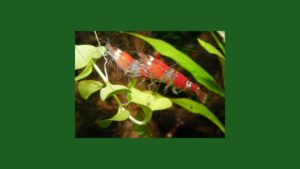Master the Art of Maintaining Shrimp in Your Home Aquarium
Discover the Joy of Keeping Colorful Shrimp as Unique Aquatic Companions
Managing a fish aquarium is not only fulfilling but also offers a unique opportunity to enhance your aquatic environment by adding shrimp. These captivating creatures introduce vibrant colors, intriguing behaviors, and a lively atmosphere to your tank. This comprehensive guide provides essential information on how to successfully care for and nurture these friendly, colorful, and prolific animals within your aquarium setup. Understanding the specific needs and behaviors of shrimp is crucial to ensuring their health and encouraging successful reproduction. The species you choose will significantly impact both the ease of care and your breeding success, so let’s delve into the best options to enhance your aquarium experience.
Shrimp species can generally be classified into three main categories:
Neocaridina shrimp
Caridina shrimp
Other varieties
Among these categories, Neocaridina shrimp are celebrated for their affordability and ease of care, making them an excellent choice for beginners who are eager to start their shrimp-keeping adventure.
Uncover the Unique Characteristics of Neocaridina Shrimp
Renowned for their resilience, adaptability, and prolific nature, Neocaridina Davidi, commonly known as the dwarf cherry shrimp, is an exceptional choice for aquarists, especially those new to the hobby. These shrimp showcase a stunning array of color morphs, including vibrant hues of red, blue, black, and green, all selectively bred to emphasize their striking colors. However, it is essential to avoid mixing different color variations in the same aquarium, as this can result in offspring that lack the vivid colors of their parents, instead appearing as dull brown or transparent shrimp. Among the various types, I personally find the “blue dream” and “black rose” varieties particularly striking and visually appealing.
When considering the purchase of shrimp, keep in mind that they are inherently social creatures that thrive in groups. It is advisable to maintain a minimum of ten individuals together, as starting with only a few can lead to shyness and withdrawal, inhibiting their natural behaviors such as exploring and foraging. Many newcomers mistakenly introduce only a couple of shrimp into their community tank, later regretting their absence and missing the joy of observing these lively and engaging creatures in action.
Choose Compatible Tank Mates to Ensure the Safety of Your Shrimp
Choosing the right tank mates for your shrimp is crucial to their overall well-being. It is important to avoid large or aggressive fish species that may pose a threat or act as predators to your shrimp. Fish such as barbs, bettas, and other similar species can significantly endanger shrimp, often leading to stress or even fatalities. For the best results, consider establishing either a dedicated shrimp aquarium or combining them with small, peaceful fish species like ember tetras or corydoras. It’s also vital to ensure your aquarium is well-planted and spacious since shrimp thrive in environments rich in vegetation and ample water volume, which provides both safety and stimulation for their natural behaviors.
Maintain Optimal Shrimp Population Density for a Healthy Aquarium
Despite their small size and minimal metabolic waste, shrimp can thrive in moderately populated tanks, but careful management is essential. It is recommended to maintain a population density of 10-15 shrimp per five gallons of water. For optimal breeding conditions, a larger aquarium of at least 20 gallons is ideal. When Neocaridina shrimp feel safe and comfortable in their environment, they will reproduce prolifically, often resulting in a delightful array of tiny shrimplets without requiring special interventions from you as their caretaker.
Be aware that many fish species will readily consume baby shrimp; therefore, if you wish to ensure the survival of your shrimplets, consider maintaining a dedicated shrimp tank or a heavily planted aquarium. I have successfully managed a large breeding colony in my high-tech, densely planted setup, which included only a minimal fish population, ensuring the safety of the young shrimp.
Originating from the temperate, shallow waters of Asia, Neocaridina shrimp possess the remarkable ability to thrive without the need for a heater, provided the ambient temperature in your home remains stable between 65-80°F throughout the year. My observations indicate that they are most active and content at temperatures ranging from 70-76°F. These shrimp prefer relatively soft, acidic water and tend to breed best at a pH level of 6.8-7.5, with a general hardness (GH) of 4-6 and a lower carbonate hardness (KH). While they can adapt to various conditions, it is advisable to avoid extremely hard water for their long-term health.
Although shrimp are often easier to care for than fish in many respects, they are particularly sensitive to fluctuations in water chemistry. Be vigilant, as they are highly susceptible to copper and other metals; thus, excessive iron fertilization for plant growth or water additives containing copper can lead to rapid mortality. A balanced amount of iron in a complete plant fertilizer is generally safe at low levels and can help achieve vibrant red plants without harming your Neocaridina shrimp.
Implement Essential Practices for Monitoring Water Quality to Enhance Shrimp Health
Shrimp are particularly sensitive to sudden changes in water conditions, often more so than fish. If you notice your shrimp behaving erratically after a water change, such as swimming aimlessly, it is a clear indication that they are not satisfied with the new water parameters. Regular water changes are crucial to avoid waste accumulation; ideally, perform changes at least once a week, with two 30% changes being more effective than a single 50% change.
In my high-tech aquarium, I frequently perform water changes, but my shrimp thrive because I meticulously match the new water to the existing parameters in the tank. You can find more detailed information about optimal water management in my previous article on understanding water parameters. If shrimp struggle to acclimate to new water conditions, they may exhibit distressing behaviors such as jumping or may even die; however, healthy shrimp typically do not jump or attempt to escape when they are satisfied with their environment.
For enthusiasts interested in maintaining shrimp populations in high-tech environments, it’s noteworthy that numerous hobbyists have successfully bred Neocaridina shrimp in setups that include CO2 supplementation. It is essential to monitor CO2 levels to avoid excessive concentrations, which can be effectively managed using a drop checker that indicates when levels are in the safe green zone versus the harmful yellow zone. Additionally, keep an eye on pH fluctuations caused by varying CO2 levels to ensure a stable environment for your shrimp.
Discover Effective Feeding Strategies for Your Shrimp: Simple and Balanced Nutrition
When it comes to nutrition, shrimp are opportunistic scavengers with relatively low dietary requirements compared to fish. In a community tank, they often thrive without targeted feeding since they will consume leftover fish food, algae, and biofilm present in their environment. However, in a dedicated shrimp tank or one with minimal fish, it is beneficial to provide them with food a few times a week, ensuring that any uneaten food is removed after about an hour to maintain optimal water quality. Personally, I have achieved excellent results by feeding my shrimp SL-Aqua M.O.R.E White pellets, which they seem to enjoy immensely.
Having successfully kept and bred Neocaridina shrimp in my high-tech planted tanks for several years without any issues, I hope this guide equips you with the essential knowledge needed for effective shrimp-keeping. With the right care and environment, you can cultivate a self-sustaining shrimp population, significantly reducing the need for constant repurchases and enhancing your aquarium experience.
The Article: Keeping Shrimp: A Beginner’s Essential Guide Appeared First On Unity Pets.
The Article Shrimp Care: Essential Guide for Beginners Was Found On https://limitsofstrategy.com




Your exploration of shrimp as aquatic companions introduces an exciting dimension to aquarium keeping that is often overlooked. I have personally found that adding shrimp not only enhances the aesthetic appeal of the tank but also contributes to maintaining a healthy ecosystem through their natural behaviors.